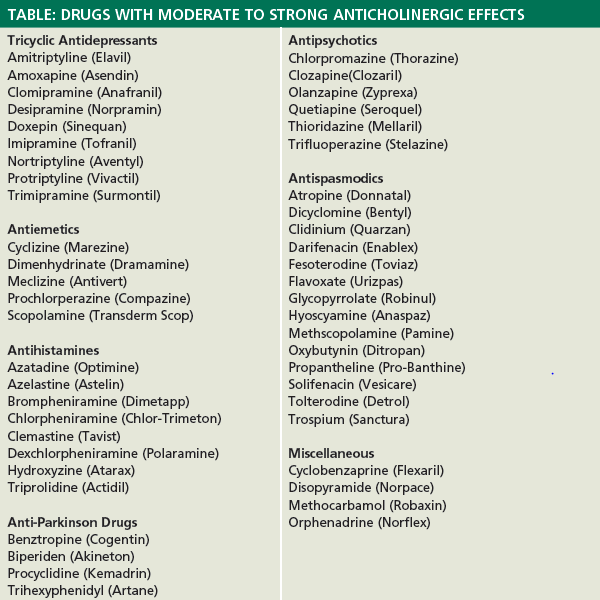Publication
Article
Pharmacy Times
Anticholinergic Drug Interactions
The potential dangers of the concomitant administration of 2 or more drugs with anticholinergic properties have been known for a long time.

The potential dangers of the concomitant administration of 2 or more drugs with anticholinergic (antimuscarinic) properties have been known for a long time.1 These dangers are pharmacodynamic drug interactions resulting from additive anticholinergic effects—although occasionally there may be a pharmacokinetic mechanism acting simultaneously. Over the past decade, efforts have been made to identify patients who may be at higher risk from additive anticholinergic drug interactions.2,3
Potential Adverse Outcomes
Excessive anticholinergic effects commonly lead to such adverse effects (AEs) as dry mouth, constipation, and blurred vision. Although these are sometimes merely a nuisance that can be handled with countermeasures, sometimes they indicate more serious outcomes such as paralytic ileus leading to intestinal obstruction. Other potentially serious outcomes of anticholinergic toxicity include altered mental status (eg, confusion, cognitive dysfunction, delirium), urinary retention, exacerbation of glaucoma, and balance problems leading to falls.
Studies
In a recent study from Australia, researchers looked at the anticholinergic burden from prescribed medications in community- dwelling older women.2 Based on a tool previously described by Carnahan et al for determining anticholinergic burden,3 the Australian researchers found that about 60% of the women were taking at least 1 drug with anticholinergic properties. (They included drugs with “potential” anticholinergic effects, so the percentage of women with a substantial anticholinergic burden was smaller than 60%.) Among those taking anticholinergic drugs, a higher anticholinergic burden was found in women who were older, had cardiovascular disease, and were taking more medications overall. There are no comparable studies from the United States or Canada, but available evidence suggests that it is common for older people in both countries to be taking medications with moderate to strong anticholinergic effects (Table).
Recommendations
Given that simultaneous use of drugs with anticholinergic effects is common and rarely contraindicated, pharmacists are likely to have the most positive impact through early detection of AEs rather than through prevention. When a new drug with anticholinergic effects is added to the regimen of a patient already on 1 or more such drugs, pharmacists should be advised to watch for evidence of the AEs previously mentioned, as well as continuously monitor for them when he or she subsequently comes in contact with the patient.
Drs. Horn and Hansten are both professors of pharmacy at the University of Washington School of Pharmacy. For an electronic version of this article, including references, if any, visit www.hanstenandhorn.com.
References
- Hansten PD. Drug Interactions. Philadelphia, PA: Lea & Febiger; 1971.
- Parkinson L, Magin PJ, Thomson A, et al. Anticholinergic burden in older woman: not seeing the wood for the trees? Med J Aust. 2015;202(2):91-94.
- Carnahan RM, Lund BC, Perry PJ, Pollock BG, Culp KR. The Anticholinergic Drug Scale as a measure of drug-related anticholinergic burden: associations with serum anticholinergic activity. J Clin Pharmacol. 2006;46(12):1481-1486.







